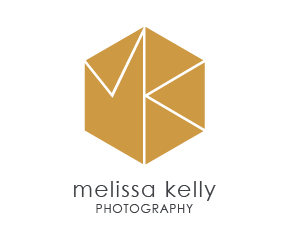GUIDE TO DEVELOPING THE BEST IMAGERY FOR YOUR MARKETING BROCHURE
Print marketing has been around forever and a day — and for good reason!
Despite the rise of digital channels, print marketing can still work wonders for any business. Spend under $170 on printed materials, for instance, and you can sell over $2,000 worth of products.
Of course, there’s no shortage of possible printed materials you could use. Flyers, posters, business cards, stickers…the list goes on and on.
However, of them all, a good old-fashioned marketing brochure can offer the best bang for your buck. Cheap to print, easy to distribute, and packed with useful information, brochures are an amazing way to market any product or service.
But only if you do it right! The key to developing a high-quality, creative marketing brochure is in the images you include. They have to appeal to your audience, capture peoples’ attention, and be representative of your brand. Want some tips on how to do it?
Keep reading to learn how to develop the best possible images for your brochures.
MAKE THEM RELEVANT
The first thing to think about is relevancy. In other words, any images you choose for the brochure must be relevant to your business and overarching message.
Ignorant to the importance of images to a brochure’s effectiveness, many marketers make the mistake of picking any old photos for the task. In so doing, they risk confusing their audience, creating an incongruous aesthetic, and sabotaging their ROI in the process.
As it happens, this is one of the dangers of using stock images for your brochures.
We’ll talk more about this later, but it’s worth mentioning here too. After all, it’s far harder to find images that are 100% relevant from a selection of pre-taken stock photographs!
You simply have less choice and control when it comes to content, forcing you to ‘make do’ with whatever’s available. By comparison, hiring a professional photographer gives you total say over the images you use.
MAKE THEM EVIDENCE-BASED
Designing a brochure for the first time isn’t easy.
Starting from a place of ignorance, you may have no idea what you’re doing or how to do it. Likewise, you don’t know what works or what your audience wants to see. Needless to say, being in this predicament can spell trouble when it comes to deciding which images to use!
That’s why it helps to conduct some market research beforehand.
Take a look at what your competitors have done in recent times. Get your hands on the successful brochures they’ve produced and audit their content. Look at the photos inside, the composition they used, and the aesthetics on show.
With any luck, you’ll come away with newfound inspiration to use in your own marketing brochure.
MAKE THEM CREATIVE
Don’t be boring! It’s literally the last thing you need when trying to get a return on the investment.
Brochures of old have a reputation for being dull and uninspiring. You pick them up, give them a cursory glance, and then put them back down (or in the trash). Being creative with your images (and the overall design, of course) is the best way to avoid this fate.
You’ll grab your audience’s attention, compel them to take a look, and keep them enthused for far longer. They’ll engage with the brochure, take note of your products/services, and, perhaps, follow up on your call to action.
Once again, checking the brochures of your competitors can help here. You can see what they did in terms of creativity and, as a result, get a sense of how to do the same.
MAKE THEM IN-KEEPING WITH THE OVERALL STYLE
Be as creative as you like, but always ensure the images remain in-keeping with the brochure’s design. Remember, relevance is crucial! Any photos should relate to your business first, but the overarching aesthetic is important as well.
Think of it as designing the interior of a house. High-quality interiors have a balance and cohesion to them. Each room has a similar style and vibe, which makes sense to the human eye and satisfies our need for uniformity.
The same applies to your brochures in terms of the images you include. If they’re somehow at odds with the overall design, then your target audience is sure to notice. Their reaction to your marketing attempts will suffer as a result.
MAKE THEM PROFESSIONAL QUALITY
Finally, it’s worth considering the value of commissioning professional images for your brochure. As we said earlier, doing so would provide total control.
You’d have brand-related, relevant, and high-quality photos that match the overall design. Better still, those photos wouldn’t be restricted to use in the brochure either. They’d be yours, meaning you can market your business with them in other channels over time as well.
More importantly, commissioning pro photos means there’s no possibility that the brochures would make your business look unprofessional. The same can’t be said for stock photography, clip-art style imagery, and irrelevant inclusions.
They send all the wrong signals to your audience about your brand.
They’ll be less likely to trust you, take you seriously, or respond to your CTA. The result? The money you spent on the brochures goes to waste and, even worse, proves detrimental to your operation.
TIME TO DEVELOP YOUR MARKETING BROCHURE
Brochures are one particular form of print marketing that can drive incredible results. However, only with a high-quality design will you reap the rewards on offer.
That’s why the images you include are fundamental to success! They have to be on point and on-brand in order to enhance the overall aesthetic. Manage that, and the marketing ROI to come will see a dramatic improvement
Hopefully, the tips in this post will help in that regard. Keep them in mind and you should develop the best possible images for your marketing brochure. Would you like some professional images to use in it?
We can help. Click here to get in touch today.





